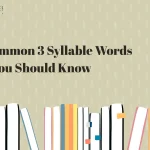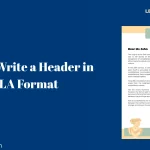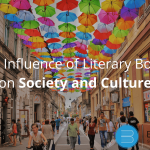Human culture has always been fundamentally based on storytelling. It’s how we amuse ourselves, pass on customs, and exchange stories. The narrative perspective is one of the most exciting parts of storytelling, and third person omniscient stands out among the other forms for its particular potency and adaptability.
What is Third Person Omniscient Exactly?
The third person omniscient narrative style, in which the narrator is fully aware of all the characters and events, is a potent storytelling device. With this point of view, the reader can fully comprehend the story as the narrator shares the motivations, ideas, and feelings of every character.
Third person Omniscient provides readers with a godlike perspective, exposing hidden subtleties and opposing points of view in contrast to other perspectives.
This facilitates the development of a deep, multi-layered story that can examine intricate relationships and themes. Writers can create a more complex and captivating tale world and improve the reading experience for readers by utilizing third person omniscient.
Key Characteristics
- Unlimited Knowledge: The narrator has complete access to the inner workings of every character.
- Flexibility: The narrative can shift focus from one character to another seamlessly.
- Broad Scope: The narrator can provide information and context beyond the immediate scenes.
You may also like: WhiteSmoke Review: Features, Pricing, Pros & Cons
History of Third Person-Omniscient Narration
Early Examples
Since ancient times, the use of third person omniscient narration has been a potent storytelling technique. Classic literature uses this narrative form, in which the narrator is fully aware of the people and the happenings.
Some of the earliest instances are seen in Homer’s “The Iliad” and “The Odyssey,” where the narrator sheds light on the motivations and ideas of a wide range of characters. Similar to this, the narrator in Dante Alighieri’s “The Divine Comedy” is fully aware of all the characters and the environment.
These early examples of third person omniscient narration demonstrate how well it can tell intricate, multifaceted stories that delve deeply into the inner lives of the characters.
Evolution Over Time
Over time, there has been a major evolution in the usage of third person omniscient narrative. Third-person omniscient was a common choice in the early days of narrative, particularly in classic literature like the works of Charles Dickens and Leo Tolstoy.
Authors were able to provide readers a complete picture of the plot, including the emotions and ideas of various characters, by using this narrative technique. As literature developed into the contemporary era, authors started experimenting with narrower viewpoints.
Nonetheless, the third person omniscient approach is still effective since it offers a special means of penetrating deeply into the thoughts of the characters and expanding the reader’s comprehension of the story.
Benefits of Third Person-Omniscient
Complete Knowledge
The comprehensive knowledge provided by the third person omniscient point of view is one of its main advantages in narrative. The narrator is able to learn every detail about every individual and incident thanks to this point of view.
It can shed light on the motivations, emotions, and thoughts of several people, resulting in a complex, multi-layered story. When readers are able to perceive the larger picture, which includes underlying themes and connections, they are able to comprehend the tale on a deeper level.
This all-encompassing perspective adds to the story’s tension and foreboding, making it more interesting and dynamic.
Flexibility in Narration
The adaptability of third person omniscient narrative is one of its main advantages. This narrative technique gives the reader a thorough understanding of the plot by enabling the author to delve into the motivations, ideas, and feelings of numerous characters.
The narrator is not constrained to the viewpoint of a single character when using third person omniscient. Rather, they may adeptly transition between characters, situations, and events, providing readers with a more profound comprehension of the story and all of its complexities.
The ability to narrate stories in a more complex and captivating way is what makes third-person omniscient such a useful tool for authors.
Depth of Character Development
Character development is one of the main advantages of Third Person Omniscient storytelling. The reader can get insight into the motivations, emotions, and ideas of several characters thanks to this literary technique.
By using third person omniscient, the author may give readers a thorough grasp of every character’s development and inner battles.
This profound understanding makes the characters more likeable and complicated, which strengthens the reader’s emotional bond with the narrative. Third person Omniscient enhances the story by examining several points of view, giving the characters’ travels additional depth and interest.
Comparing Third-PersonOmniscient to Other Points of View
First Person Narration
First-person narration gives readers a close-knit and intimate look at the story from the viewpoint of a single individual. This point of view forges a close bond between the reader and the narrator by outright disclosing their feelings, ideas, and motives.
It is nevertheless constrained by the narrator’s background and experiences. Third person omniscient narrative, on the other hand, provides a wider perspective.
It gives the audience a deeper comprehension of the story world by enabling the storyteller to convey the thoughts and deeds of several characters. Because of this, third person omniscient storytelling is particularly effective since it can deftly combine several complicated storylines.
Third Person Limited
“Third Person Omniscient” is a potent narrative perspective in storytelling that gives the author an all-seeing perspective.
Third Person Omniscient allows the narrator to dive into the brains of several characters, bringing insights and views that deepen the story, in contrast to “First Person” or “Third Person Limited,” where the narrative is limited to one character’s thoughts and experiences.
This larger scope allows the author to provide the reader with a more thorough understanding of the world of the novel and the motivations of its characters, giving them a richer, more engaging reading experience.
Techniques for Writing in Third Person Omniscient
Establishing the Omniscient Voice
When writing from the third person omniscient perspective, “Establishing the Omniscient Voice” is an essential approach. With the help of this narrative approach, the author gains access to god-like knowledge and is able to explore the ideas, emotions, and experiences of numerous individuals.
Authors must maintain consistency in viewpoint and make smooth transitions between characters’ views in order to effectively build this voice. By doing this, writers improve comprehension and immersion by providing readers with a broad overview of the story’s setting.
Gaining proficiency in the omniscient voice enables writers to create complex storylines, investigate a range of character dynamics, and produce rich, multi-layered stories that demonstrate the great potential of third-person omniscient storytelling.
Balancing Knowledge and Mystery
Learning to tell stories in the third person omniscient perspective is like learning to use a strong tool. It enables authors to create a work that strikes a balance between divulging details and maintaining some things under wraps.
By using this storytelling technique, writers can explore the emotions and ideas of several people, giving readers a broad overview of the setting of the story. Writers create an engaging experience that keeps readers interested by carefully revealing knowledge while maintaining elements of concealment.
By giving storytellers more control over the information flow, this narrative approach allows them to produce tales with greater depth and complexity.
Character Development with Third Person Omniscient
Internal Thoughts and Feelings
The ability of third person omniscient storytelling to dig into the inner thoughts and emotions of several individuals is what gives it its power. Readers are given a deeper knowledge of the motivations, desires, and conflicts of diverse characters by this narrative perspective, which provides insight into their thinking.
Third person omniscient storytelling allows for deeper character development and strengthens the bond between the viewer and the characters by providing access to their thoughts and feelings.
By giving the reader a thorough understanding of the tale world, adding complex viewpoints to the plot, and deepening their immersion in the story, this narrative style improves the storytelling experience.
Multiple Perspectives
A potent narrative viewpoint in storytelling, “Third Person Omniscient” provides insight into various points of view within a story’s universe. Character development is enhanced by the narrator’s ability to dive into the thoughts and emotions of different characters from this point of view.
Through “Third Person Omniscient,” readers are exposed to a variety of perspectives and reasons, which helps them comprehend the story’s events on a deeper level. Because readers are able to empathise with and get more engaged with the different characters, this narrative approach promotes empathy.
Through the use of the “Third Person Omniscient” perspective, writers are able to create engrossing stories that captivate readers by creating characters that are complex and multifaceted.
Plot Development with Third Person Omniscient
Foreshadowing
Foreshadowing is a clever technique used in third person omniscient narration plot development to improve storytelling. Because the author in this narrative perspective has complete knowledge of the thoughts, emotions, and actions of the characters, there are hints and clues about what will happen in the future.
In third person omniscient literature, foreshadowing can manifest itself in a number of ways, including veiled character actions, symbolic imagery, and cryptic language.
Authors can create tension and suspense by skillfully utilising foreshadowing, which keeps readers interested as they put together the clues that point to surprising plot turns down the road. This method enhances the reading experience by giving the audience a more engaging and fulfilling story.
Dramatic Irony
Using third person omniscient narration in the plot creation process makes dramatic irony a powerful tool. When the audience is aware of something while the story’s characters are unaware of it, dramatic irony results.
Third person omniscient narration allows the narrator to share information with the audience that the characters are unable to express because they have access to all of the characters’ thoughts, feelings, and knowledge. As the viewer waits to see how the characters will respond when they eventually find out, this builds tension and suspense.
Dramatic irony is a technique that writers can use to effectively engage and fascinate their audience. Third-person omniscient narration is one such technique.
Tips for Aspiring Writers
Practice and Patience
It takes time and effort to become a proficient writer for individuals who want to pursue storytelling as a career. Specifically, mastering the art of third person omniscient narration will significantly improve your narrative abilities.
Third person omniscient storytelling gives the narrator access to several characters’ thoughts and gives viewers a view beyond one point of view. But effective use of this narrative device necessitates rigorous practice.
As you hone your ability to transition between characters’ points of view with consistency and engagement, patience will become increasingly important. Aspiring authors can fully utilise the power of third person omniscient narrative to enthral their audience with perseverance and constant practice.
Reading Widely
For prospective authors, “reading widely” is an essential piece of advice. It entails investigating diverse writing styles, authors, and genres. Writers can learn more about various narrative viewpoints, including third person omniscient, and enhance their comprehension of storytelling approaches by engaging with a wide variety of literary works.
This storytelling technique gives the reader a more comprehensive understanding of the story’s happenings by granting the author access to the thoughts and feelings of numerous characters.
Aspiring writers can learn how to effectively portray many viewpoints, improve character development, and provide their readers with a fuller, more immersive reading experience by studying how authors utilise third person omniscient narration.
Conclusion
The third-person omniscient viewpoint, with its unmatched richness and versatility, is still a potent storytelling tool. It keeps readers enthralled and enhances stories across genres by enabling authors to fully explore a multitude of characters and intricate themes.
Frequently Asked Questions
The main advantage is its comprehensive insight, allowing the narrator to reveal the thoughts, feelings, and motivations of all characters, providing a deeper understanding of the story.
Third person omniscient provides a god-like view of the entire narrative, including all characters’ thoughts and backgrounds, while third person limited focuses on one character’s perspective at a time.
Absolutely. Many contemporary authors use this perspective to create rich, layered narratives that explore multiple characters and intricate plots.
Challenges include managing the vast amount of information available to the narrator and maintaining a consistent narrative voice while shifting between different characters and scenes.
While it can be used effectively in most genres, it is particularly well-suited to genres that involve complex world-building and large casts of characters, such as fantasy and historical fiction.
















